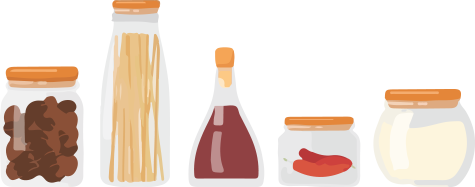Australian Coffee Culture
Drinking coffee is never just drinking coffee. Morning rituals, afternoon me time, catching up with friends, keeping yourself sane and basking in an array of flavours. Coffee is not only the world’s most highly traded commodities or the second most consumed beverage after water. Coffee also fosters one of the biggest universally recognised cultures; coffee culture.
But what is coffee culture? Is it a cult-like worshipping of the coffee bean or is it a celebration for all things chic, like pebbled lanes, side street cafes and a flavour no one can get sick of?
Coffee culture looks different around the world. In Europe, it’s a way of life. Long afternoons sitting by ever-refilling cups of coffee surrounded by friends. An American’s love for coffee is an extension of their affair with sugar and extravagant foods. Quite the opposite to the way it is served (stereotypically) in Europe, America’s most popular methods of consuming caffeine include Frappes and Macchiatos.
In Australia, however, coffee culture is simple and world-renowned. Aussies prefer quality coffees in the form of long

Why does Australia have a coffee culture that is world-renowned?
Australian coffee roasters, brewers and barristers have made a big splash in the realm of coffee culture because of their determination to constantly innovate their craft and stay on the forefront of developing new ways to perfect coffee. Upward of 10 million Aussies indulge in coffee daily. But when exactly did we become so obsessed? When did the coffee culture start in Australia?
Before the modern history of coffee in Australia truly began, the first recorded coffee in the Australian market arrived with the first fleet. Seeds were collected in Rio de Janeiro during the voyage to Australia before they were planted at Government house. However, Australia’s early settlers failed to understand how to cultivate healthy coffee shrubs and so the plants perished.
Our modern coffee history began after the Second World War (World War II) thanks to the Italian and Greek immigrants who came to Australia with their coffee machines. The introduction of these espresso machines in Australia not only revolutionised coffee habits down under, but world wide. Usually you need to walk before you can run, but with Aussies learning to drink coffee with espresso as their training wheels, they were able to fly through coffee innovation. What to Order: A Caffe Espresso or Cappuccino. Enjoyed best with a good view and absolutely no food.

Melbourne: The Coffee Capital Of The World ?
Let’s do some simple math (we promise not to bore you). If Australia is the coffee capital of the world, and Melbourne is Australia’s beating coffee heart, then that makes Melbourne the coffee capital of the world.
Melbourne’s coffee culture stretches beyond cafes and catch ups and into specialty coffee roasting, the ethical sourcing of coffee beans and unique brewings. Melbourne coffee suppliers and connoisseur’s alike explore different roast levels, single origins coffees, blends and temperatures.
While flat whites and quality espressos are at the forefront of Melbourne’s coffee market, there is far more depth and range in Melbourne’s coffee consumption than just a basic cup of coffee. Melbourne is home to talented baristas and latte art, which is a norm in most (if not every) cafe!
Beyond the coffee, Melbourne’s cafes and coffee shops are so innovative and well designed that they are a destination within themselves. From renovated warehouses to holes in the wall to cosy book filled corners with vinyls playing on a loop, there is a cafe to suit your ideal coffee drinking scenery. Over 63% of Melbournians leave their homes and offices to drink their daily coffee at a cafe which is why it’s no surprise that the culture around coffee is so strong.
Bonus statistic… approximately 95% of the cafes in Melbourne are independently owned. That probably begins to explain the Australian Starbucks failure and why chains like Gloria Jean have just barely made their mark.

Why Starbucks is not considered successful in Australia?
Picture this, It’s July 2000. With the turn of the century Australia has a new big coffee player coming into town all the way from America. Full of confidence and an arrogance toward success Starbucks opened its doors and began to pop up everywhere… only to fail within 8 years.
The Australian standard for filter coffee is so unrivaled that by 2008, Starbucks was forced to close several of its locations losing up to $105 million dollars. To this day, there are less than 25 Starbucks stores across the entire Oceania continent.
And what does this tell us about Australians and their coffee? If it’s not high quality, independently run and unparalleled in flavour, it doesn’t stand a chance.

 Sign In
Sign In 